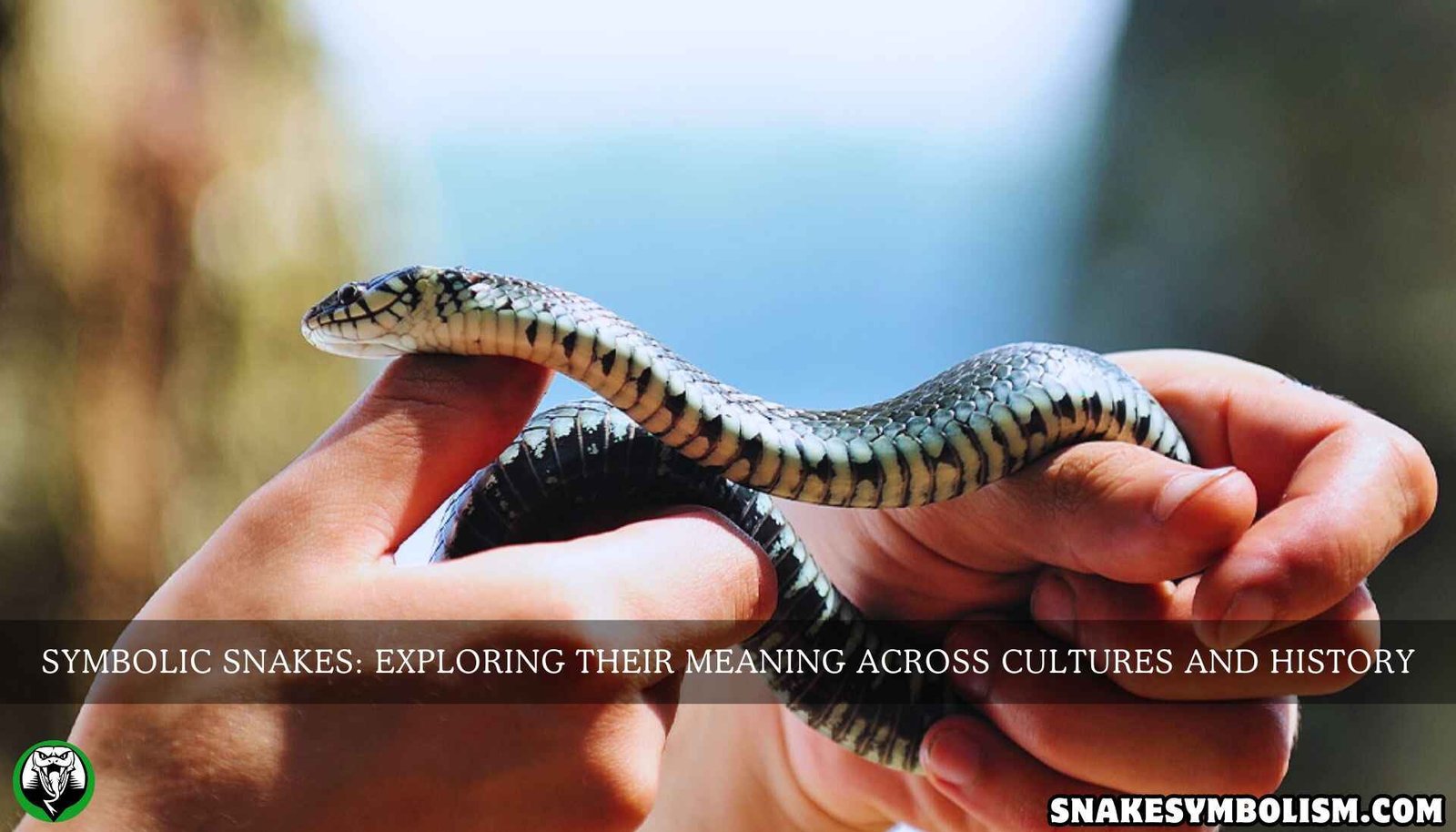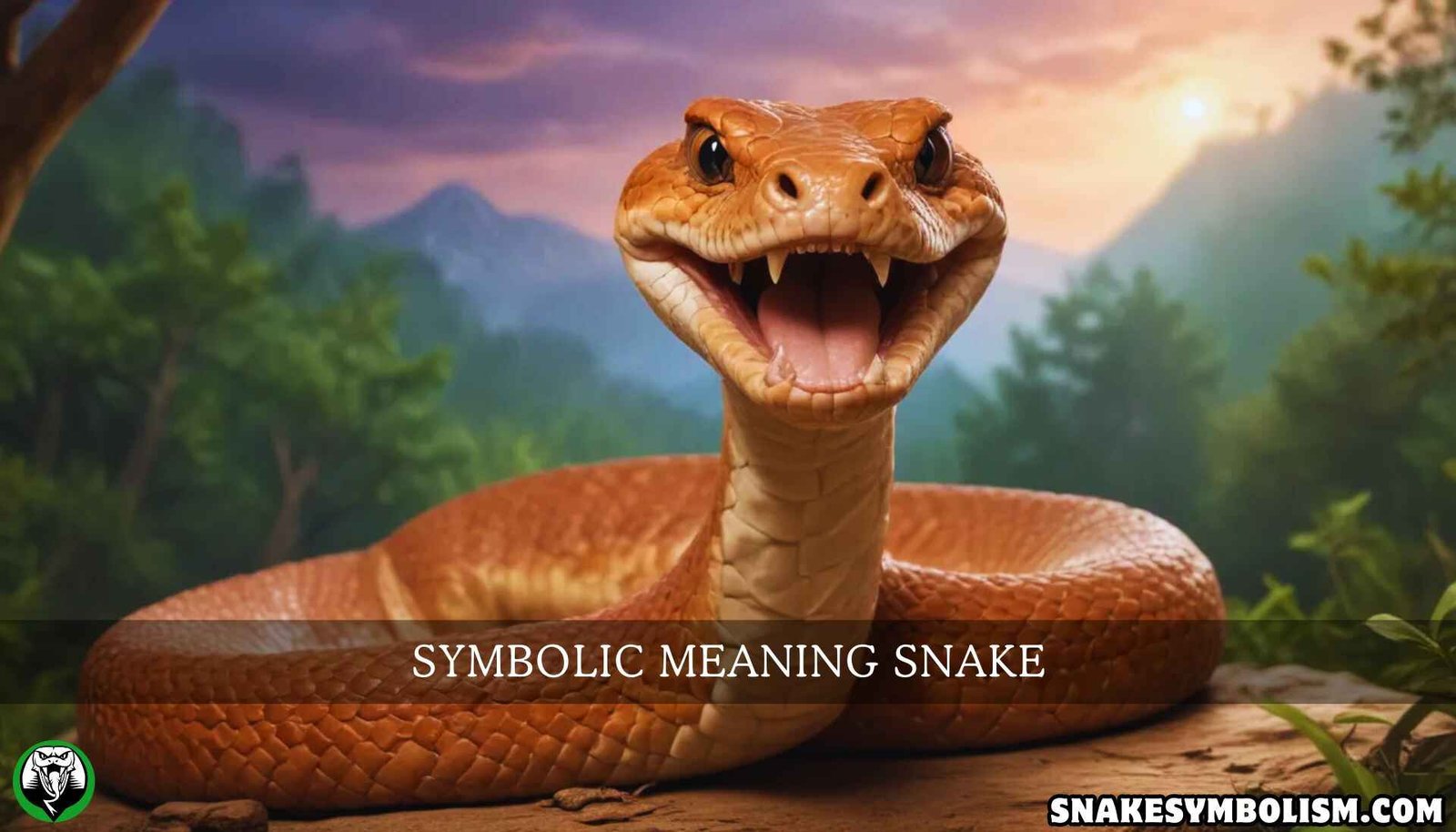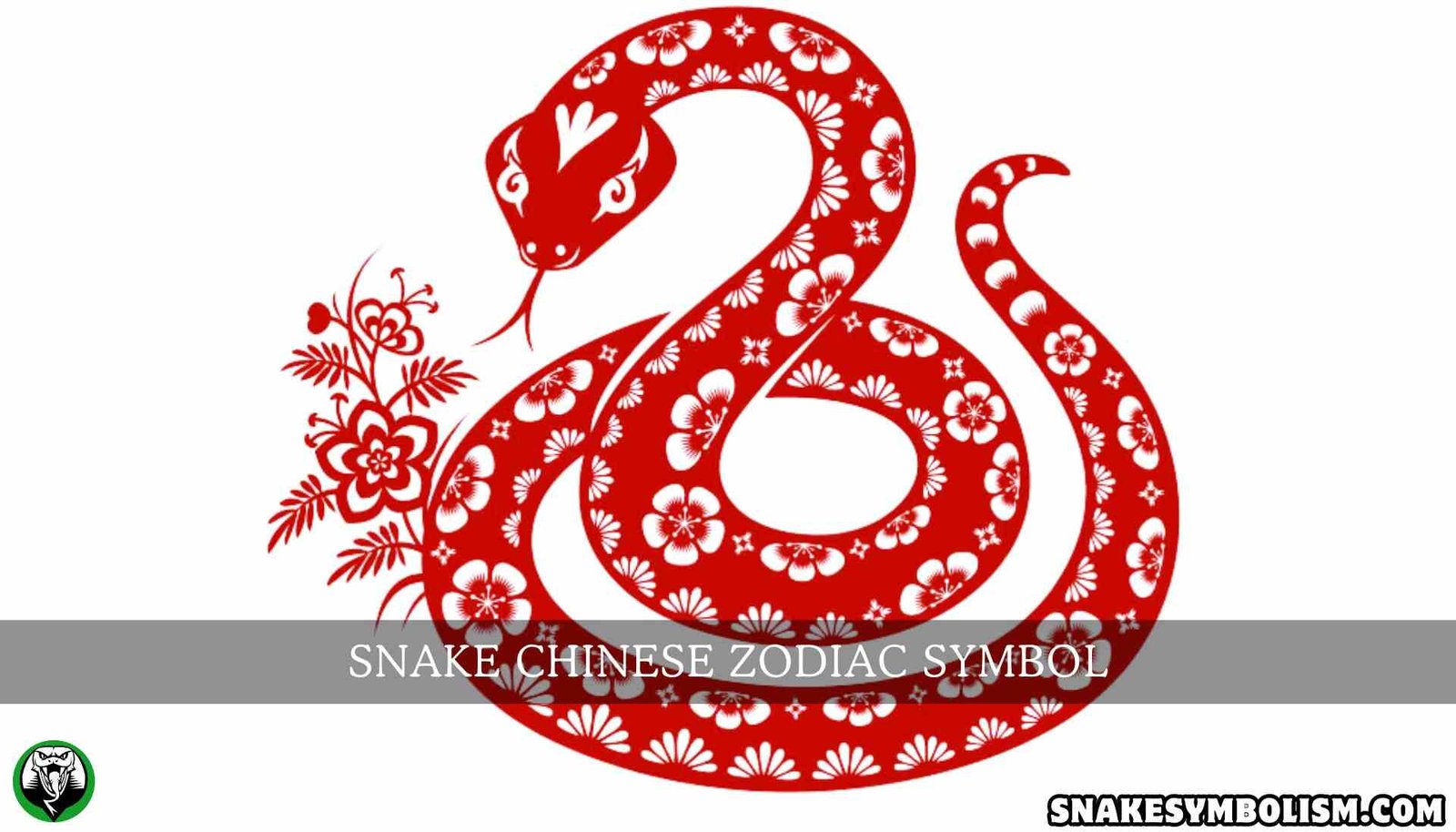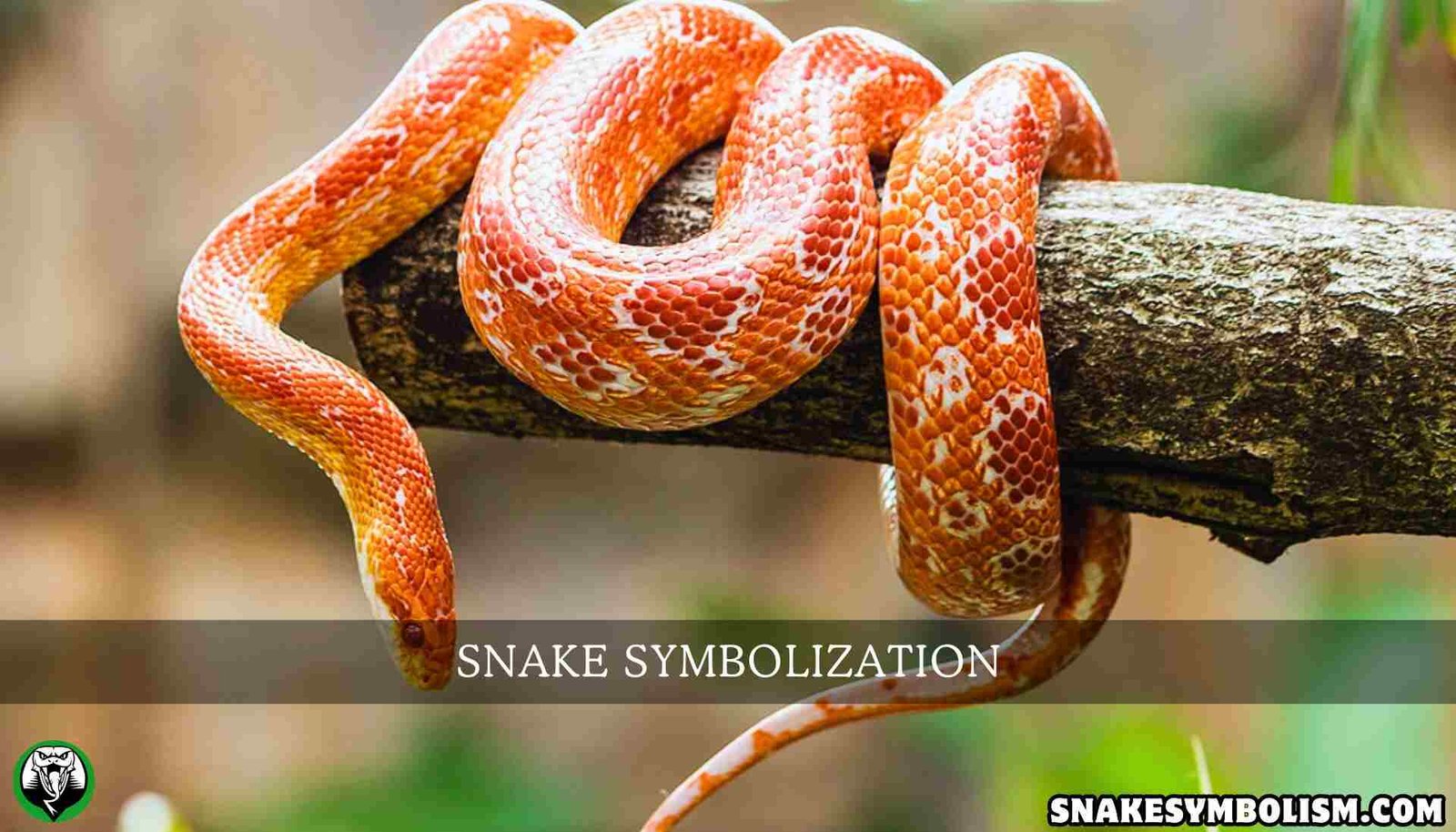For several age-long years, snakes have evoked terror, admiration, and even fascination among human beings. Beginning with the very genesis of humankind, snakes have been revered as powerful icons that have always occupied deep within the civilization, religions, and mythologies of mankind. Snakes are symbols that embody opposites such as creation and destruction, movement and no motion, knowledge and ignorance, and so forth. It is not a dissimilar case that this essay addresses the multifaceted significance of snakes in mythology, religion, or culture.
Snakes in Ancient Cultures
- Greek Mythology
Snakes have played an important role in people’s symbolism within Ancient Greece as a source of peril and one of healing, at the same time. The snake is largely represented by Asclepius who is the god of medicine in the ancient Greek religion. His stick which is crossed with a snake is used to represent this same cosmology of modern medicine called the Rod of Asclepius. This symbol indicates that the ancient’s ethical belief in snakes was because those creatures were able to slough and heal hoist them up to being curative forces.
Another dimension of snakes in Greek mythology concerns Medusa; the Gorgon who had snakes instead of hair. Everything about Medusa spells danger, chaos, and death especially her gaze which easily transforms people to stone. Still, the slaying of Medusa by Perseus changes everything for instead medusa’s head is now a talisman of great power a weapon, giving the status and right of snakes as both destructive and protective.
Also, there is a myth about an Ouroboros, a snake that eats its tail, and is the myth of destroying and symbolizing rebirth. An Ouroboros usually depicts opposites working together and repetitive renewal which illuminates snakes in the literature as transgressors.
- Egyptian Mythology
In ancient Egypt, the symbols of snakes were more often illustratively sensitive. The cobra in particular merited both respect and contempt. Uraeus, the conventional crocodilian element, naked of decoration, was the head of goddesses Nut and Merti. It was a common sight to see the pharaoh wearing a crown embellished with the uraeus to give protection and to express the concept of royalty, godliness, and power. The insignia of the Egyptian Priestess’s names, which included the cobra, was regularly used by nature’s curse-wadjet whose nature was solicitous for the pharaoh and Egypt.
Punching holes in this development – the snake Apophis was about chaos and destruction. Apophis, who was known to swallow Huitzilopochtli, was an enormous serpent who wished to engulf the sun god Ra during the sojourn of Ra in the underworld. This picture of Ra in pursuit of the snake god Apophis symbolizes the battle between good and evil and order and anarchy as the snake represents evil or the malevolent side of life.
Also, within the mythology of the Ennead, there is the bug depicting Khepri, creating a god who is rolling the sun on it, as the symbolism of a bug is found in both – the movement of a bug and creation, regeneration. The cyclical concept of life that surrounds Khepri reflects the cyclical characteristics of the snakes and how they can create and destroy (the snake).
- Mythology of The Norse
In Norse mythology, the snake takes the form of Jörmungandr – also known as ‘The Midgard Serpent’ – a world-encircling serpent. Jörmungandr, like all creation, is one of the monstrous offsprings of Loki and reiterates that nature has a force that brings ambiguity and disarray into a place. By existing, the serpent denotes the idea of the world being in perpetual disquiet, development, or for worse, degeneracy.
The last moment of Jörmungandr’s importance happens at Ragnarök, the world’s end when Jörmungandr appears to fight off thunder god Thor. Their clashing is respectively the clashing of order and chaos – Jörmungandr embodies the instinctive illumination of nature and its infinite fears where the world will not be spared. This story promotes the averment of the symbol of the snake as an agent of destruction and construction that has to be present in nature.
Snakes in Religion
- The Serpent in Christianity
The world over, snake symbology is most often credited to one singular Christian practice, where a snake represents temptation, sin, and vile. The serpent in this case may be most commonly associated in the comprehension processes of clients with Genesis 3 where in the Garden of Eden, Eve was seduced by a snake into tasting the forbidden fruit hence resulting to the fall of man. The serpent in this context marries shrewdness, artfulness, and a way of defying the Lord of Lords.
Nonetheless, the image of the snake is also associated with healing through the Christian lens where even though its negative has been outlined. Moses lifted up a snake made of bronze on a pole in the wilderness to save the Israelites from poisonous snake bites with which they were afflicted on their journey out of bondage in Egypt (Numbers 21:9). Such contrasting depictions bring out the paradox surrounding the perception and the relationship that people have with snakes where they epitomizing both vice and virtue.
Also in the last chapter of the Revelation John writes about a terrific dragon, the meaning has ever been conferred to a serpent, a custodian of Satan whose chief function is to work against God and lead mankind into despair. This reinforces the evil stereotypes of the snake, but on the other hand, its importance and role in the battle of light and darkness has so many dimensions in its history.
- Hinduism and Buddhism
Among the more entity is the μaṅg – serpentine. In Hinduism, all this is reserved for the nāgas who are snakes of water and subterranean forces of nature. God of Nàgàsh, Shesha. The image of Shesa which is traditionally called: Sheshanaga in representation is that of a chief million he births upholds the cosmos on his hoods. That imagery portrays how the serpent is also relevant to the order of the universe and the cycle of life.
The epic tale of Vasuki which is another important Nāga details how it was utilized as a rope when the ocean of milk was churned during the birth of the Universe. The churning represents two more incarnations of destruction and creation as the ocean was both a source of the nectar of life as well as poison. Thus, Snakes are a portrayal of paradox or a dichotomy of the cycle. They signify creation as well as chaos.
In the religion of Buddhism, the serpent symbolizes protection and enlightenment. One popular story tells of Mucalinda who is the king of serpents, and how he protected the Buddha from the storm while the latter was meditating under the Bodhi tree. By his protective action, the snake is rendered as a protective personage who is possessive of knowledge and spirituality.
Snakes as Symbols of Evil
The image of the snake in modern novels and movies is most often that of the antagonist or some insidious presence. In the Harry Potter series by J.K. Rowling, for instance, the snake is used in the creation of the Slytherin house, which stands for cleverness, drive for power, and the makings of a resourceful person. Another example to promote the cold-blooded serpent’s snake-feet shooter is Nagini, who is “the pet” of Volde(bad).
Likewise, in George Orwell’s Animal Farm, the snake remains the ideal representation of betrayal and even espionage. With a swiftness that is unspoken and underscored, it can strike with an intent to kill, if it is exactly that, an insatiable desire to please that certain authority, through betrayal of others, for selfish benefits. This is the reason why modern folks still associate snakes with horror and vengeance.
Read Previous – Symbolic Meaning of Snakes
Snakes as Symbols of Transformation
Yet still, there have been many instances in pop culture where snakes have been portrayed in a much better light. In some instances, they are personally empowering and relate to making a change in one’s life. Similarly, Marvel Comics explains that the Greek mythical character of Medusa, having born snake-like hair, used it for combat, hence reversing the stigma associated with the picture of a snake.
In Disney’s The Jungle Book, Kaa, the python, is represented as an ambiguous character who is sometimes a guardian and at other times a menace. However, while Kaa seems to be a hindrance to Mowgli in the beginning, he is the return of the knowledge, and the temptation of change, emphasizing the duality of the snake as a helper and a foe.
Also, snakes are widely used in mass culture as a metaphor for some personal ascension or rehabilitation. As the image of a snake’s shedding skin, family, friends, and acquaintances, particularly self-help books suggest will encourage one to abandon a part of one’s self for the better. This metaphor is familiar to all people trying to alter an aspect of their lives for the better and thus think about the snake minimizing its negative influence and maximizing positive ones, the renascence side of it.
The Snake’s Connection to Healing and Medicine
It is very difficult to imagine snakes without any positive associations, and one association has to do with healing and medicine. The Rod of Asclepius, a serpent coiling around a staff, is another primitive art of healing.
In other words, the image of snakes is traditionally retained in the modern world to support such concepts as medicine and healthcare. This image is possessed by numerous international hospitals and medical establishments and illustrates the snake’s attributes regarding life, death, and birth which are core in healing.
Also, the significance of shedding the skin and developing a new one makes snakes signs of physical and psychic healing as well as uplifting transformations. In some ancient cultures, there were claims that snake venoms also have a healing effect, thus associating the snakes with healing.
Conclusion
Snakes whether in mythology and religion, psychology, or in popular culture: are a universal symbol of great power that encompasses both sides of life. Change, healing, wisdom, danger, chaos, and everything concerning human existence are personified by snakes. baleful in its duality comes as a constant reminder that such is life; construction – deconstruction, harmony – anarchy, life – death. Closer studies of the snake as a symbol leave one understanding prompter that sense of fear, passion, or even the sense of perspective and change that is inherent in everyone.
FAQs
Q: What is the reason behind the snake being a symbol that is often associated with rebirth?
A: Snakes are known to shed off their skins and reemerge with new skin. It is this very reason that gives the snakes the idea of shedding away the old and embracing the new which is why they are related to rebirth.
Q: In which way do snakes relate to the principles of healing?
A: Often, in various civilizations, snakes are believed to be associated with healing thanks to the traits of regeneration and the divine being such as Asclepius – the Greek God of Health.
Q: In sermons, what are the snakes seen as?
A: The snakes in Christianity are associated with temptation and sin, the most famous belonging to the book of Genesis in the context of Adam and Eve where the serpent encouraged Eve to partake in the fruit which was disallowed.
Q: Explain the meaning of the Ouroboros.
A: By definition, the Ouroboros represents an ancient silhouette of a serpent nibbling at its extremities, implying the phases of life, death, and regeneration as well as the assimilation of opposites.
Q: What do snakes mean in the personality vision?
A: For example, snakes in the dream world may represent different ideas such as one’s internal fears, metamorphosis, treatment, or repression of certain feelings.
Stay connected and updated with – SnakeSymbolism!






